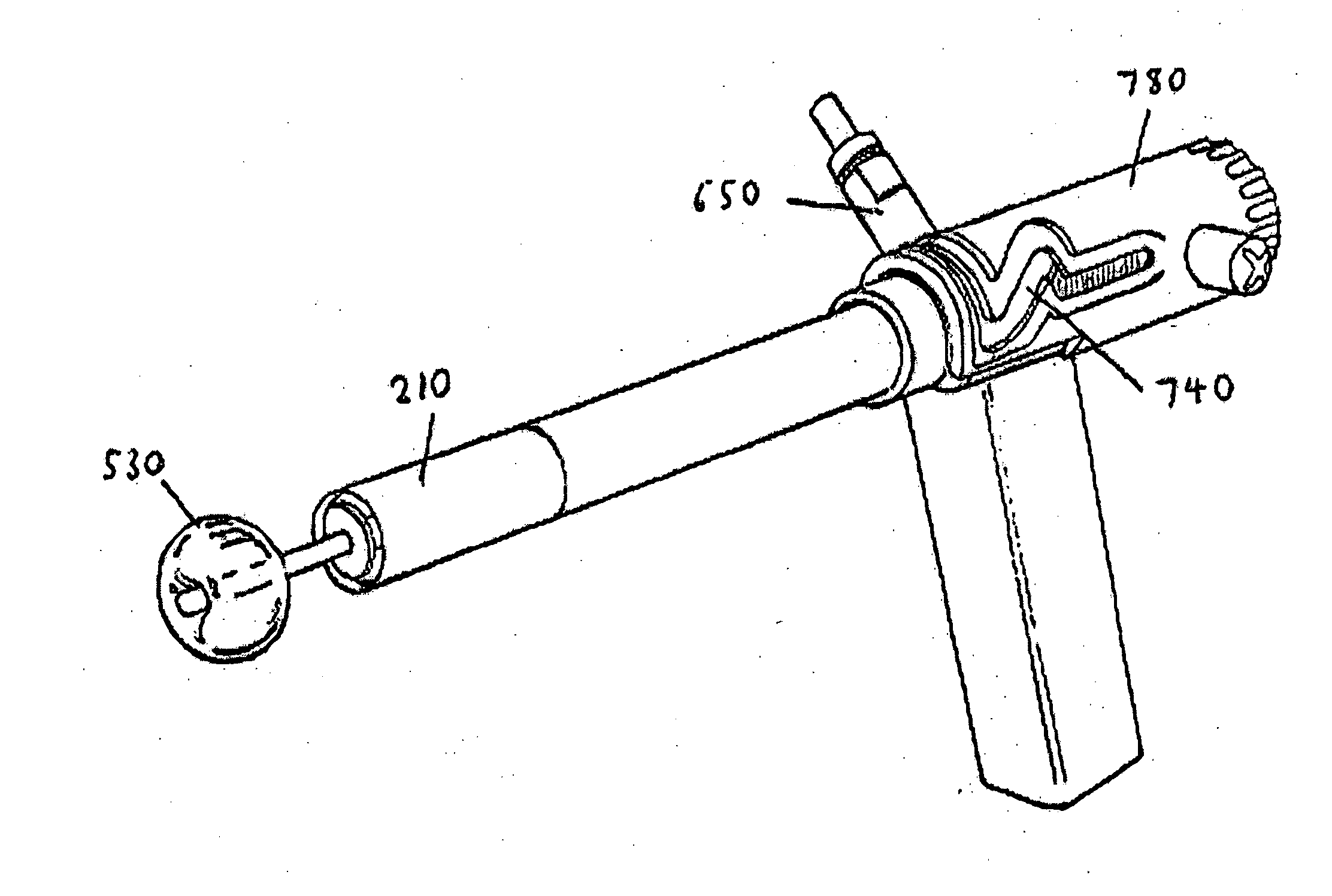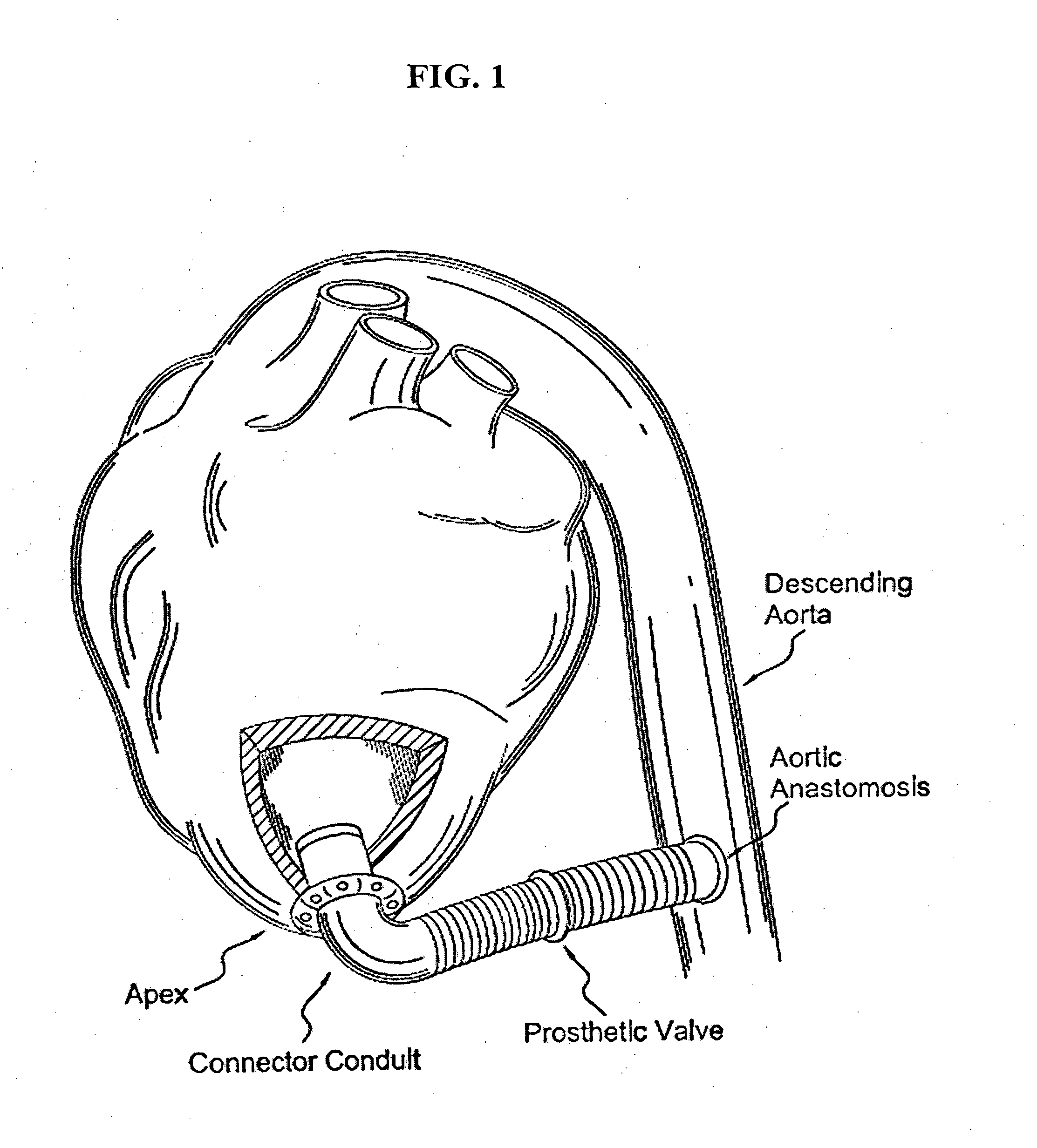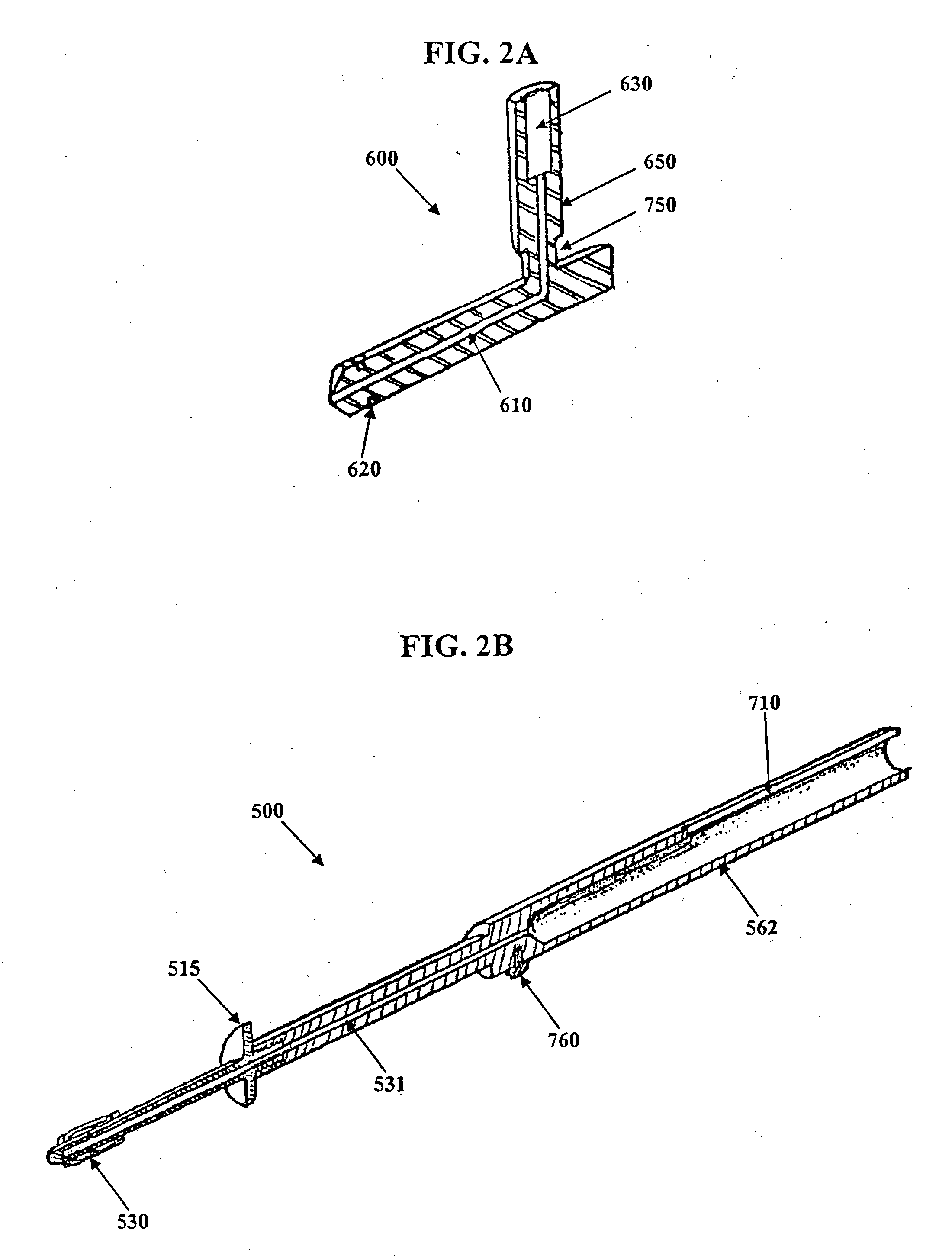Apparatus and method for forming a hole in a hollow organ
a hollow organ and apparatus technology, applied in the field of apparatus and methods for forming holes in hollow organs, can solve the problems of affecting the operation efficiency of the device, and affecting the internal heart structure, so as to prevent the sticking of the cam mechanism
- Summary
- Abstract
- Description
- Claims
- Application Information
AI Technical Summary
Benefits of technology
Problems solved by technology
Method used
Image
Examples
Embodiment Construction
Referring now to the figures, related U.S. Patent Application Publication No. 2005-0251187 to Beane, et al., which is incorporated herein by reference in its entirety, describes use of a sequencing element (such as a cam mechanism) that helps to ensure that critical steps of implanting a connector conduit into the apex of the left ventricle are performed in the proper sequence. (See FIG. 1). Once a tissue plug is created, the sequencing element partially reduces the diameter of the expanding element so that the expanding element can enter the inner diameter of the cutting element while remaining of large enough diameter to prevent the tissue plug from sliding off of the retractor element.
For example, the '187 patent application publication relates to an applicator for forming a hole in a wall of a hollow organ and for inserting a connector conduit into the hole to facilitate connection of the connector conduit to the hollow organ. The applicator includes a hole forming element for f...
PUM
 Login to View More
Login to View More Abstract
Description
Claims
Application Information
 Login to View More
Login to View More - R&D Engineer
- R&D Manager
- IP Professional
- Industry Leading Data Capabilities
- Powerful AI technology
- Patent DNA Extraction
Browse by: Latest US Patents, China's latest patents, Technical Efficacy Thesaurus, Application Domain, Technology Topic, Popular Technical Reports.
© 2024 PatSnap. All rights reserved.Legal|Privacy policy|Modern Slavery Act Transparency Statement|Sitemap|About US| Contact US: help@patsnap.com










